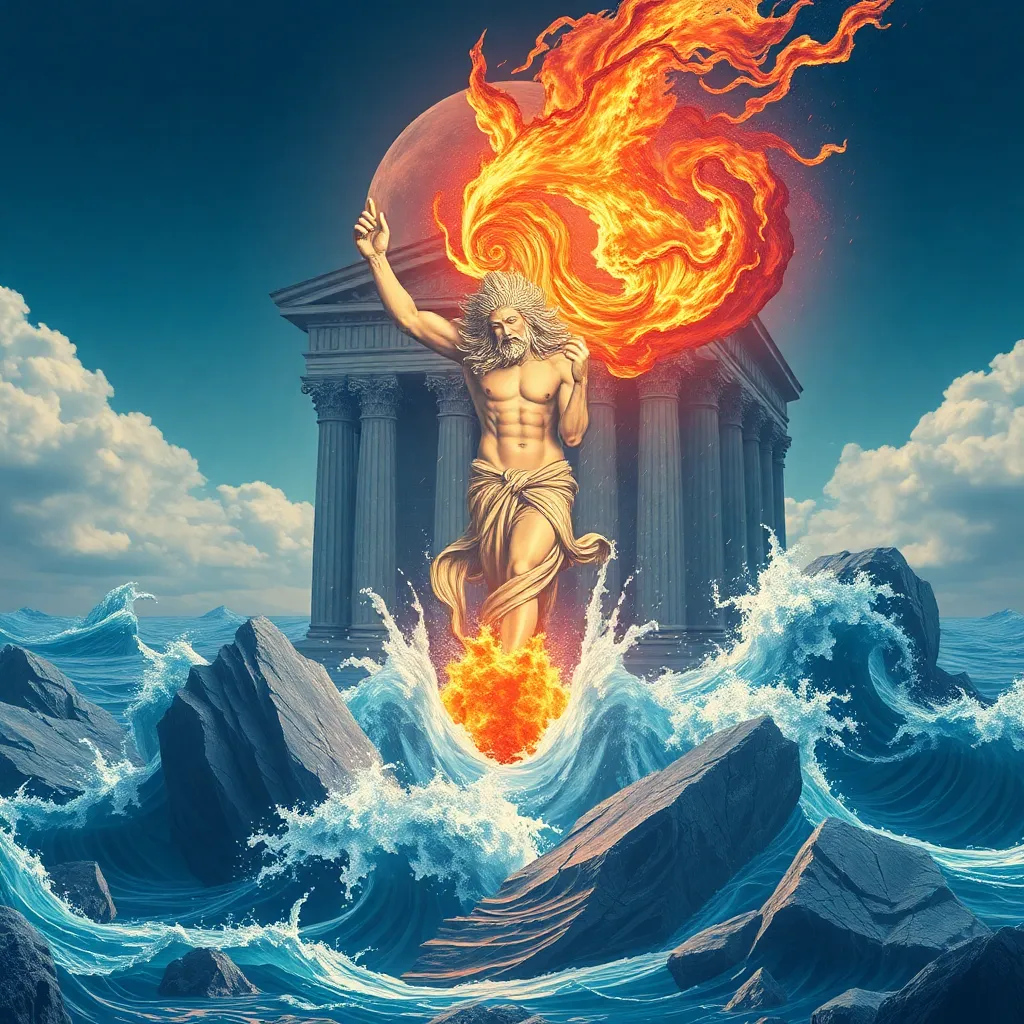Poseidon and the Creation of Earthquakes: Myth vs. Reality
I. Introduction
In Greek mythology, Poseidon is a prominent figure known as the God of the Sea, Earthquakes, and Horses. His significance extends beyond the realms of water; he is also intricately linked to the phenomenon of earthquakes. In ancient belief systems, earthquakes were often interpreted as the manifestations of divine anger or power, a perspective that reflected humanity’s need to explain the unpredictable and often devastating nature of these natural events. This article aims to explore the intersection between the mythological narratives surrounding Poseidon and the scientific realities of earthquakes.
II. The Mythological Origins of Poseidon
Poseidon, one of the Twelve Olympian gods, is often depicted wielding a trident, a symbol of his dominion over the seas. His character embodies not only the vastness and fury of the ocean but also the unpredictable nature of the earth itself. In many myths, Poseidon is known for his temperamental personality, which could lead to either bountiful blessings or catastrophic destruction.
In ancient Greek mythology, Poseidon played a crucial role in various legends, including the creation of horses and his rivalry with Athena for the patronage of Athens. Earthquakes, in this context, were seen as a direct result of his wrath, reinforcing the idea that the god wielded significant power over the natural world.
The symbolism of earthquakes in relation to Poseidon can be understood as a reflection of the Greeks’ attempts to rationalize the unpredictable nature of these events. When the ground shook, it was often interpreted as Poseidon striking the earth to express his displeasure.
III. Earthquakes in Ancient Greek Culture
Throughout history, Greece has experienced numerous earthquakes due to its geological location. Historical accounts from ancient texts provide insight into how these events shaped the lives and beliefs of the Greek people.
- One notable earthquake occurred in 373 BCE, devastating the city of Helike and leading to its eventual submersion in the sea.
- Another significant event in 226 BCE struck the island of Rhodes, destroying many structures and influencing local myths about Poseidon’s anger.
In response to earthquakes, the ancient Greeks often turned to their gods for explanations. Temples were built in honor of Poseidon, and rituals were conducted to appease him. Myths surrounding Poseidon’s influence on seismic activity included tales of him battling other gods or giants, where the shaking of the earth was a sign of his triumph or fury.
IV. The Science of Earthquakes
While mythology provides a narrative framework for understanding earthquakes, modern science offers a different perspective based on geological processes. Earthquakes are primarily caused by the movement of tectonic plates beneath the Earth’s surface.
The key components of earthquake science include:
- Tectonic Plates: The Earth’s crust is divided into large sections known as tectonic plates that float on the semi-fluid mantle beneath.
- Fault Lines: Earthquakes often occur along fault lines, where two plates meet and interact, leading to stress build-up and eventual release.
- Seismic Waves: When stress is released, it generates seismic waves that propagate through the Earth, causing the ground to shake.
Modern understanding of earthquake prediction has advanced, but predicting the exact timing and location of earthquakes remains challenging due to the complex nature of geological processes.
V. The Intersection of Myth and Science
The myths surrounding Poseidon reflect ancient humanity’s attempts to explain natural phenomena that were beyond their comprehension. These stories provided a sense of agency and understanding in a world filled with uncertainty.
Moreover, the impact of mythology on early scientific thought is evident in how myths often framed the understanding of nature. For example:
- Ancient cultures worldwide have similar myths relating natural disasters to divine displeasure.
- Poseidon’s myth parallels other cultural beliefs, such as the Japanese god Ryūjin, who is also associated with water and earthquakes.
These comparisons highlight a universal human tendency to personify nature’s forces through deities, illustrating the deep-rooted connection between mythology and the human experience of natural disasters.
VI. The Legacy of Poseidon in Contemporary Culture
Poseidon’s influence extends into contemporary culture, appearing in literature, film, and art. His representation often embodies the duality of nature—both beautiful and destructive. Modern interpretations include:
- Literary works such as Rick Riordan’s “Percy Jackson” series, where Poseidon plays a central role.
- Films that depict Poseidon as a powerful figure, often showcasing his control over the seas and earthquakes.
There remains a fascination with mythological explanations for natural events, as people often seek to connect with something greater than themselves during times of crisis. This fascination influences public perception and responses to natural disasters, reminding us of the enduring power of mythology in understanding the world.
VII. Conclusion
In summary, the exploration of Poseidon and his association with earthquakes reveals a rich tapestry of myth and reality. While ancient Greeks attributed seismic activity to the whims of their gods, modern science provides a clearer understanding of the geological processes at play. Recognizing the distinction between myth and reality is essential, yet it is equally important to appreciate the cultural significance of these myths in shaping human understanding of natural disasters. The legacy of Poseidon persists, reminding us of our quest to comprehend the world and its unpredictable forces through both mythology and science.
VIII. Further Reading and Resources
For those interested in delving deeper into Greek mythology and the science of earthquakes, consider exploring the following resources:
- Books: “Mythology: Timeless Tales of Gods and Heroes” by Edith Hamilton
- Articles: “Earthquake Science” from the United States Geological Survey (USGS)
- Documentaries: “The Great Quake: A History of Earthquakes” available on streaming platforms
- Podcasts: “Mythos and Logos” exploring the intersection of mythology and science.




